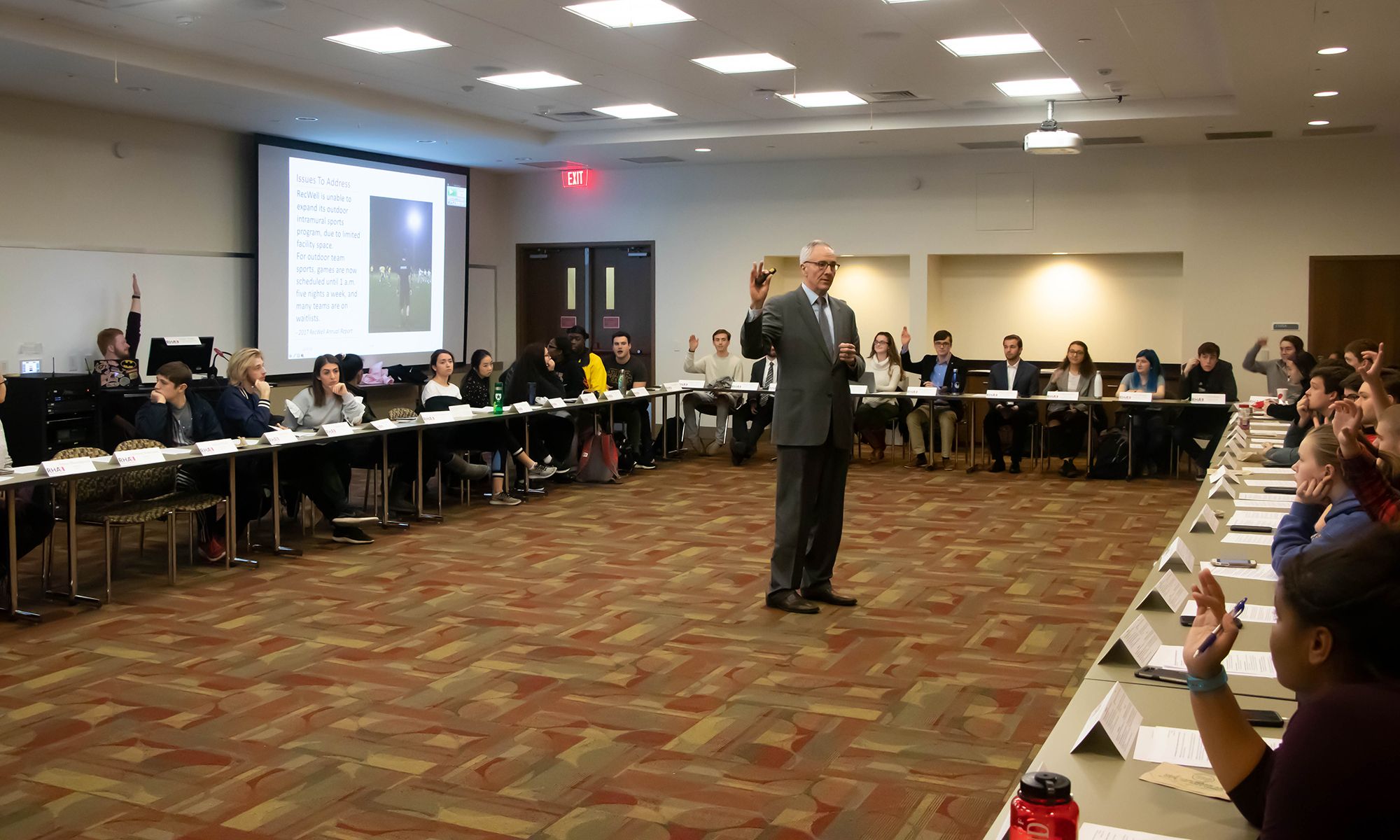At an emergency meeting Tuesday, the University of Maryland RHA passed a resolution in support of exploring the idea of repurposing sections of the University Golf Course for new recreational fields, a track and field facility and parking spaces.
The Residence Hall Association’s last senate meeting was Nov. 26, and for the group to express its opinion as an organization before the Facilities Council considers the proposal in December, an emergency senate had to be called, said Zachary Schlaich, the RHA senator-at-large who wrote the resolution.
In July, it was revealed this university was considering a preliminary proposal to build on the golf course. The proposal drew criticism from the campus community because it would require eliminating four of the course’s 18 holes and could have environmental consequences involving runoff and light pollution.
Carlo Colella, the main architect of the proposal, said that while he doesn’t want to get people’s hopes up, “it could be possible to have the new facilities and 18 holes.”
An online petition supporting leaving the course as is has garnered more than 2,000 signatures, but the resolution passed 34-2.
“I was honestly surprised there wasn’t more debate,” RHA Vice President Benjamin Reichard said. “Maybe that speaks to the kind of unified opinion on this.”
[Read more: The RHA wants to bring dockless scooters to UMD]
A week ago, Colella, the university’s vice president for administration and finance, gave a similar presentation on this proposal to students and faculty at Stamp Student Union. He pointed out the issues faced by students who play intramural sports and utilize these training fields.
On Tuesday, he said that the golf course is the “biggest land area that is underutilized” by the university, with only 20 percent of rounds played by students, faculty and staff.
“A lot of intramural sports face a lot of waitlists and really bad scheduling issues,” said Schlaich, a junior computer engineering major.
Construction on the golf course would also attempt to solve the lack of illuminated fields this university has, Colella said. This university is second-to-last among Big Ten schools in terms of lighted outdoor recreation space, he said.
RHA members, however, expressed concerns with the potential impact the addition of a lighted space would have on the nearby astronomy observatory.
[Read more: The University of Maryland Golf Course will soon have a monarch butterfly garden]
Colella said he doesn’t expect that to be a concern due to the fact the structures would be at a lower elevation than the observatory more than half a mile away, and that light fixtures would be built in a way that only casts lighting downward.
Sophomore senator Lucie Roach asked Colella why the university wasn’t taking advantage of the unutilized forested space below hole eight rather than taking away holes. The topography, Colella said, was too steep to build on, which would make construction more costly.
The latest development to the proposal includes the potential of building another parking lot, Colella said. This also brought questions from the RHA as to whether the university would even need to increase surface parking lots due to the creation of the Purple Line.
Construction is expected to eliminate scores of on-campus parking spaces over the next few years, and Colella said that it’s “not clear if the Purple Line will overcome that big of a reduction.”
The cost of the project is also unknown because the university didn’t want to spend too much time conceptualizing the idea of these facilities being built on the golf course until receiving further endorsement, Colella said.
He estimated that, if the proposal is approved, the project would take about a year and a half to complete.
The final clause of the RHA’s resolution said that it “will continue to monitor the process” and that “this resolution does not constitute approval of the final project proposal.” Colella said there will be an opportunity for further student input in the spring if the proposal is approved by the Facilities Council.
“I’m pretty glad that the body was so unified in the vote,” Reichard said. “It was a completely overwhelming majority.”



